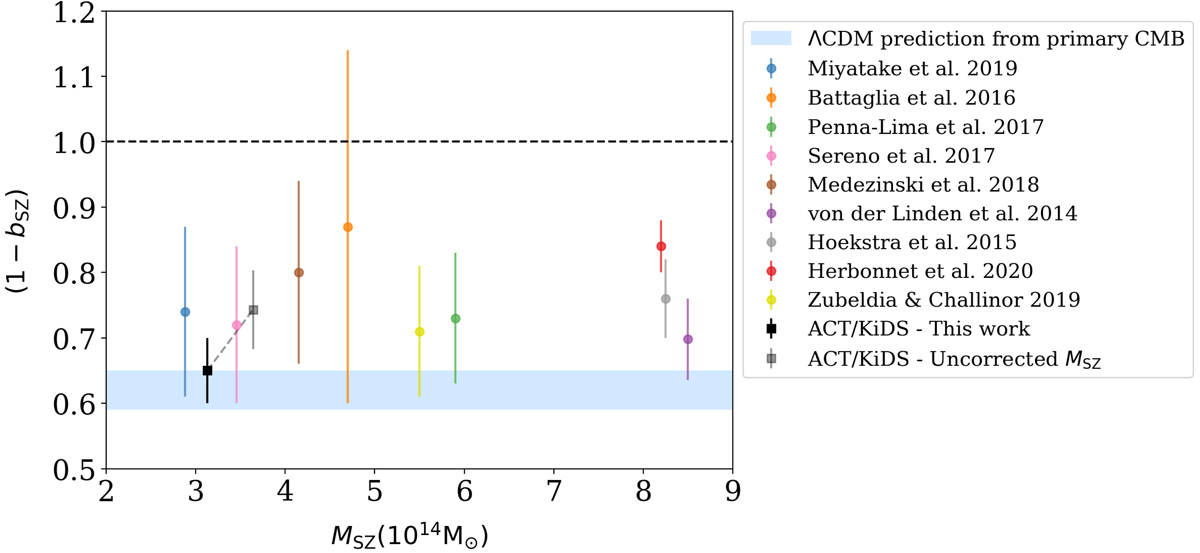Fig. 4.

Download original image
Estimated (1 − bSZ) bias parameter from this analysis (ACT SZ-detected clusters calibrated with KiDS weak lensing), compared to other recent results. Shown on this figure at the lower mass range, the analyses of ACT and Planck clusters using HSC (Miyatake et al. 2019; Medezinski et al. 2018), ACT/CS82 (Battaglia et al. 2016), CLASH (Penna-Lima et al. 2017), PSZ2LenS (Sereno et al. 2017), WtG (von der Linden et al. 2014), CCCP (Hoekstra et al. 2015) which has recently been updated to CCCP and MENeaCS (Herbonnet et al. 2020) and Planck clusters with Planck CMB lensing (Zubeldia & Challinor 2019) analyses. The blue band indicates the prediction from Planck primary CMB measurements if the ΛCDM model is correct (Planck Collaboration VI 2020), given the SZ clusters observed by Planck. This value is computed using a Planck Collaboration VI (2020) primary CMB best fit cosmology, however using the cosmology derived from ACT DR6 lensing, Madhavacheril et al. (2023), would give the same result.
Current usage metrics show cumulative count of Article Views (full-text article views including HTML views, PDF and ePub downloads, according to the available data) and Abstracts Views on Vision4Press platform.
Data correspond to usage on the plateform after 2015. The current usage metrics is available 48-96 hours after online publication and is updated daily on week days.
Initial download of the metrics may take a while.


